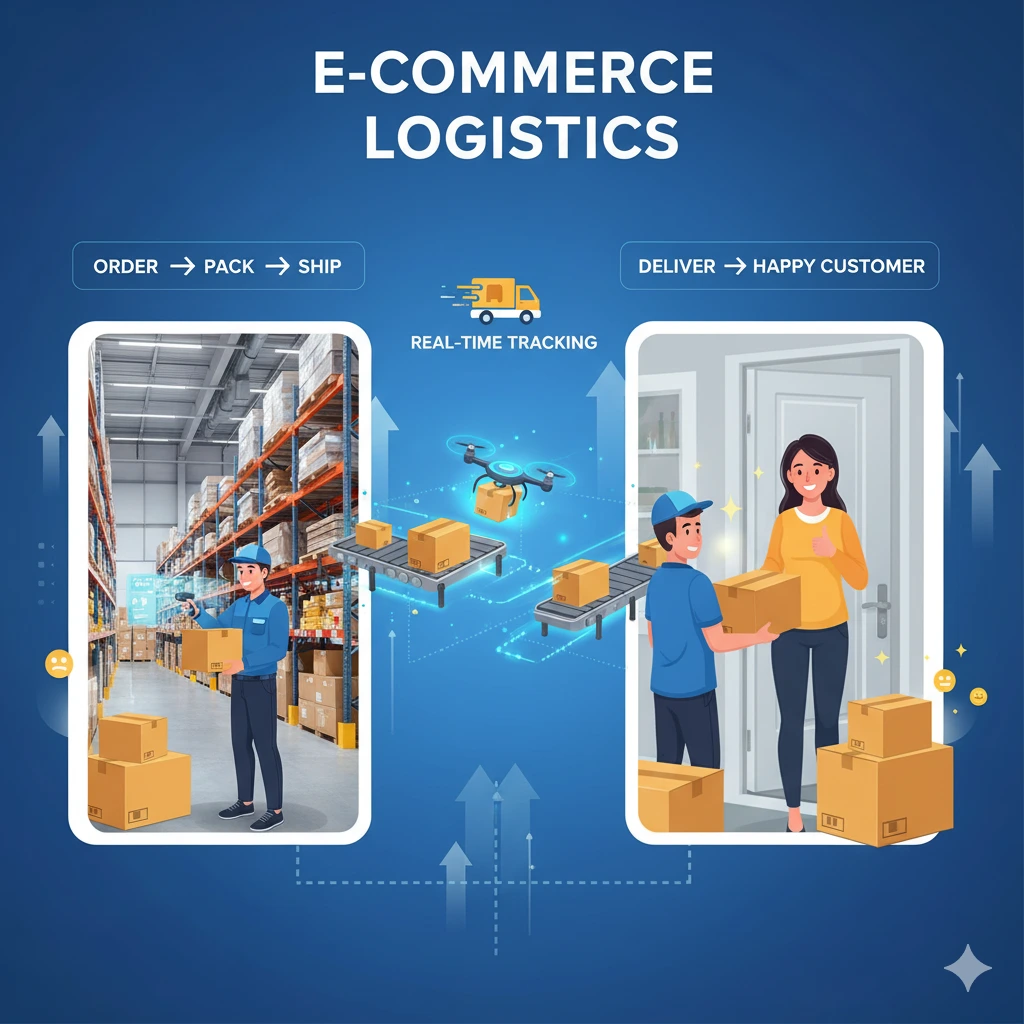In the fast-paced world of e-commerce, delivery speed and reliability can make or break a customer’s experience. Even if your products are top-notch, slow or complicated shipping can lead to abandoned carts, negative reviews, and lost repeat business. Streamlining logistics is not just about moving packages—it’s about creating a seamless, satisfying customer journey.
Why Efficient E-Commerce Logistics Matters
- Customer Satisfaction: Fast, reliable deliveries enhance trust and loyalty.
- Competitive Advantage: In a crowded online market, quick shipping differentiates your brand.
- Lower Operational Costs: Efficient logistics reduces errors, returns, and wastage.
- Scalability: A streamlined system allows your business to grow without chaos.
Step 1: Choose the Right Shipping Partners
Partnering with reliable logistics providers is crucial. Consider:
- Coverage: Ensure they deliver to all your target areas efficiently.
- Speed: Compare standard, express, and same-day delivery options.
- Pricing: Look for competitive rates without compromising reliability.
- Technology: Track shipments, integrate APIs, and automate notifications for smoother operations.
Combining multiple couriers for domestic and international shipments can also minimize delays and optimize costs.
Step 2: Optimize Your Inventory
Inventory management is the backbone of fast delivery. Tips include:
- Centralized Inventory: Keep your stock in one location or strategically distribute it across multiple warehouses.
- Real-Time Stock Updates: Avoid selling products that are out of stock, which leads to cancellations and unhappy customers.
- Demand Forecasting: Use historical data and trends to predict popular products and stock them in advance.
A well-organized inventory ensures that orders are fulfilled quickly and accurately.
Step 3: Automate Order Processing
Manual order processing slows down shipping and increases the risk of errors. Consider:
- E-Commerce Platform Integration: Automate order data flow from your store to the logistics provider.
- Automated Picking and Packing: Use barcode scanners and software to reduce mistakes.
- Shipment Notifications: Automatically update customers with tracking information to enhance transparency.
Automation not only speeds up delivery but also improves operational efficiency.
Step 4: Offer Multiple Delivery Options
Customers appreciate choice. Offering multiple options can improve satisfaction:
- Standard Shipping: Cost-effective, suitable for non-urgent orders.
- Express Delivery: For customers willing to pay a premium for speed.
- Scheduled Delivery: Lets customers choose convenient delivery times.
- Click-and-Collect: In-store pickup or locker options for local customers.
Providing flexibility increases convenience and reduces the likelihood of missed deliveries.
Step 5: Focus on Packaging
Efficient logistics isn’t just about speed; packaging plays a key role:
- Protect Products: Reduce damage with sturdy, appropriate packaging materials.
- Compact Packaging: Minimize box sizes to save on shipping costs.
- Branded Packaging: Creates a memorable unboxing experience, boosting customer loyalty.
Smart packaging protects your products while reinforcing your brand identity.
Step 6: Leverage Technology
Modern logistics relies heavily on technology. Useful tools include:
- Route Optimization Software: Reduces delivery times and fuel costs.
- Inventory Management Systems: Tracks stock levels, predicts demand, and triggers reorders.
- Customer Communication Tools: Automated SMS/email notifications for shipping updates.
- Analytics Dashboards: Monitor delivery times, returns, and courier performance to improve operations.
Investing in technology helps scale your logistics smoothly and efficiently.
Step 7: Handle Returns Efficiently
Returns are inevitable in e-commerce. A smooth returns process:
- Builds trust and encourages repeat purchases.
- Reduces customer frustration with clear policies and quick refunds.
- Minimizes operational disruption when integrated with your logistics system.
Offer prepaid return labels, easy pickup options, and automated refund notifications to make returns hassle-free.
Step 8: Monitor Performance and Improve
Continuous improvement is essential:
- Track delivery times, customer complaints, and missed deliveries.
- Collect feedback from customers about shipping experience.
- Optimize warehouse layout, courier partnerships, and route planning based on data.
Even small tweaks can significantly improve delivery speed and customer satisfaction.
Conclusion
Efficient e-commerce logistics is more than just moving packages from point A to B. It’s a critical part of the customer experience. By choosing reliable partners, optimizing inventory, automating processes, offering flexible delivery, and leveraging technology, you can ensure faster deliveries, happier customers, and higher repeat business.
Happy customers lead to positive reviews, brand loyalty, and long-term growth. In e-commerce, logistics excellence isn’t optional—it’s a competitive necessity.

Leave a Reply